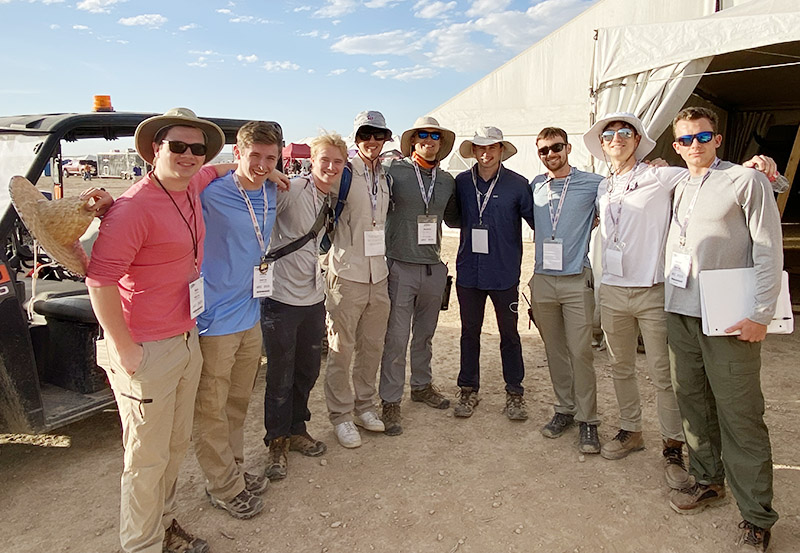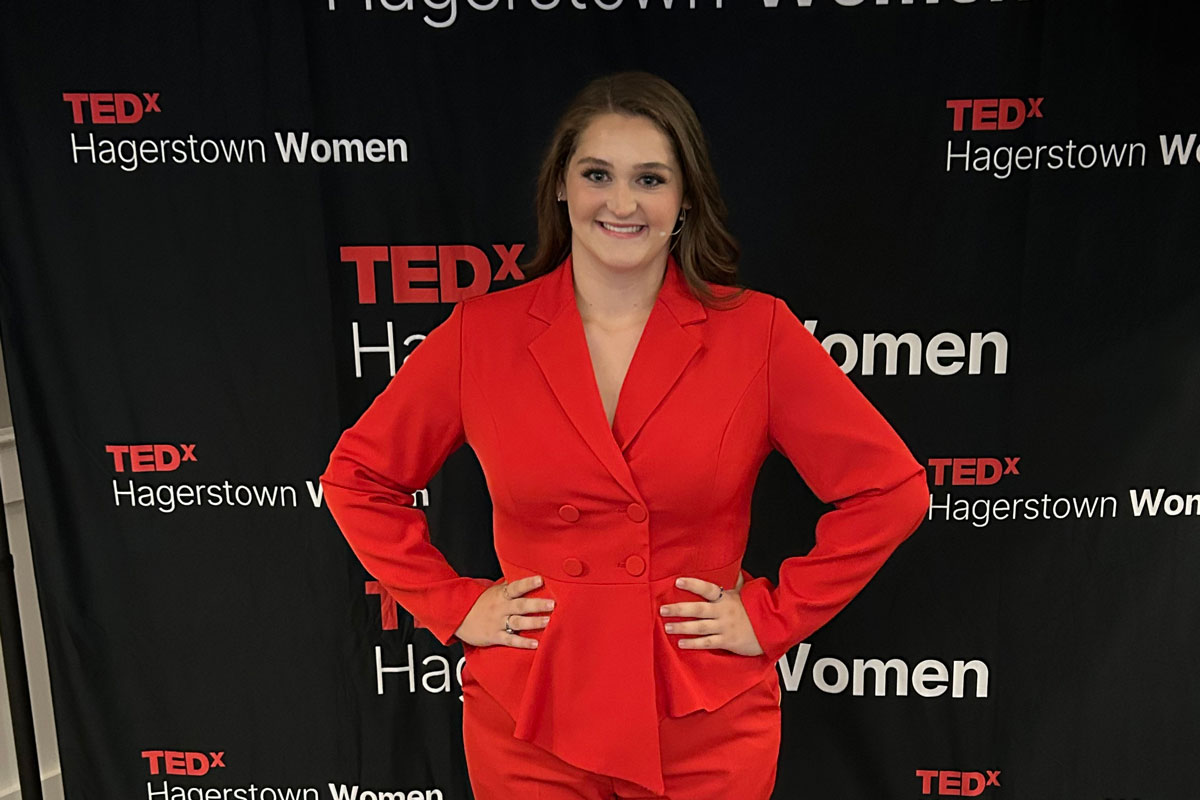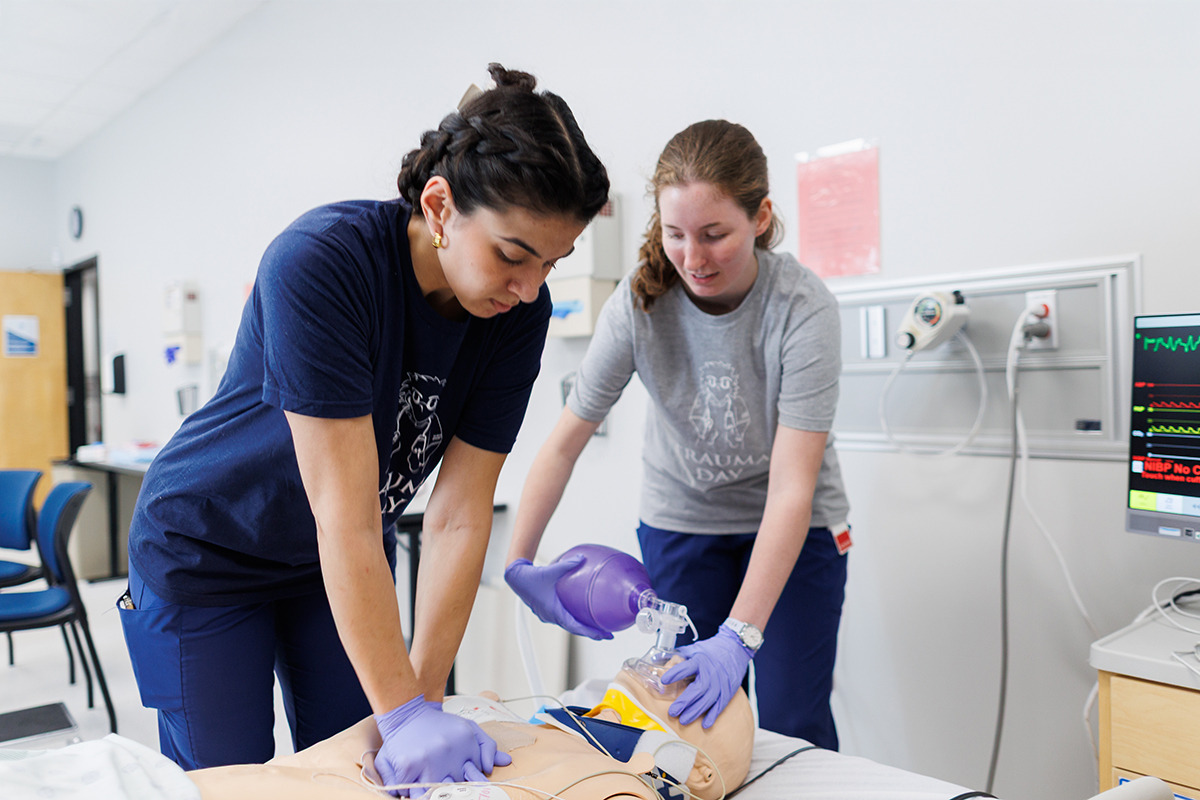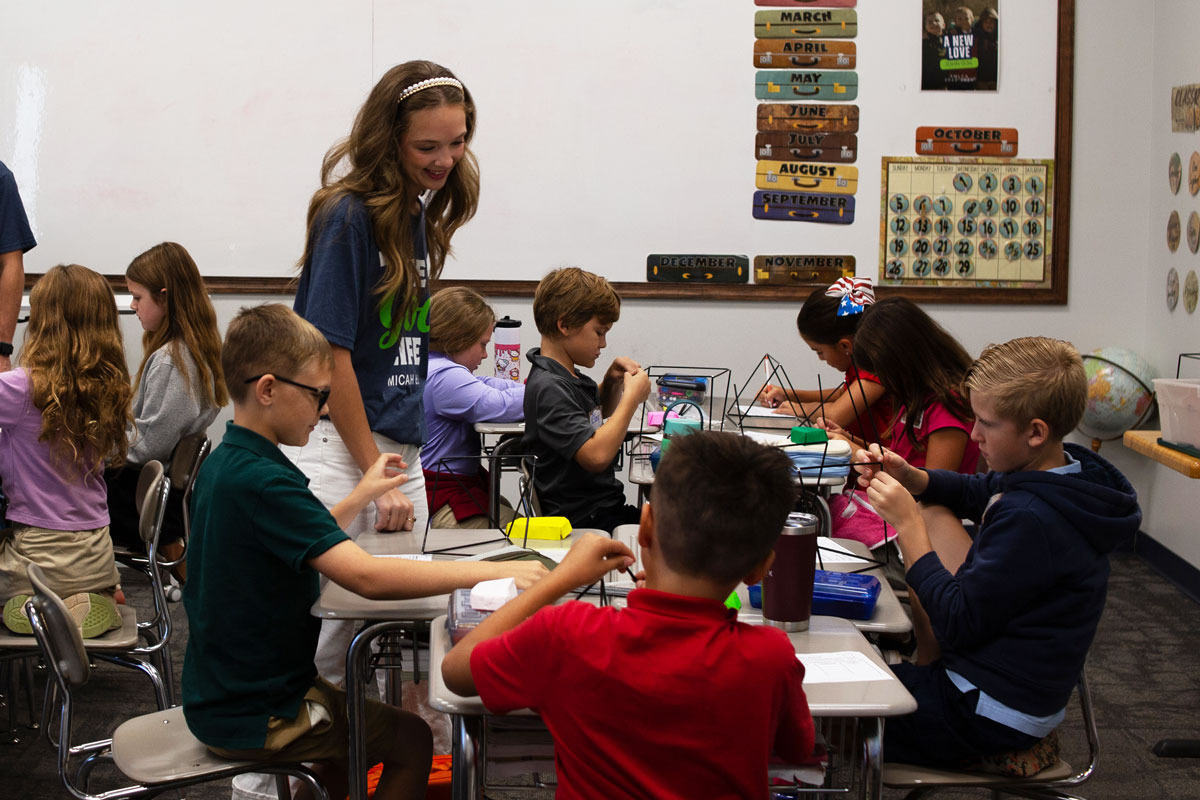Liberty Rocketry successfully launches Trinity, its third entry at international engineering competition in Texas
July 18, 2025 : By Ted Allen - Office of Communications & Public Engagement
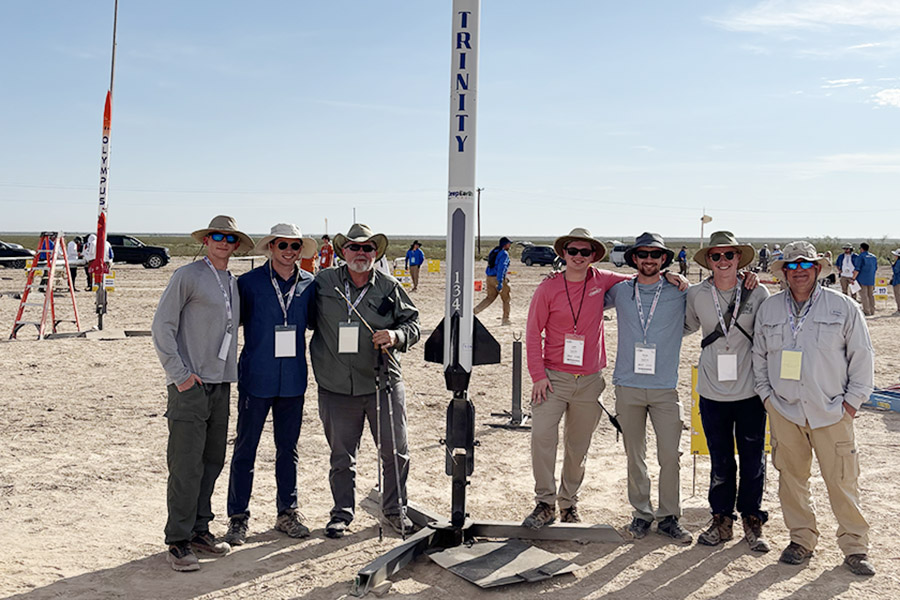
Liberty Rocketry, the largest competition team in Liberty University’s School of Engineering, experienced mixed results at last month’s International Rocket Engineering Competition (IREC), held from June 9-14 in Midland, Texas.
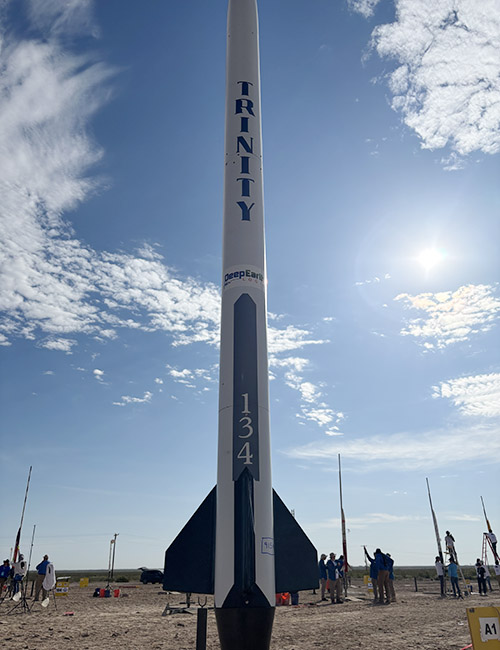
With Trinity, its third rocket launched at what was formerly known as the Spaceport America Cup, the team made several technological improvements over Genesis (which placed 43rd in its debut in 2023) and Waymaker (which finished ninth last summer). The team landed in 57th place out of a record 143 collegiate entries from around the world.
“The rocket had two launches in total with a sub-scale (5,134 feet) launch (in April in Monterey, Va.) that went amazing, with our simulation only being off by 1 percent (55 feet), and our competition launch that also was very successful with our simulation only being off by around 3 percent,” said Luke Krick, a rising senior studying mechanical engineering who served as the team’s chief engineer.
The June competition was hosted by the Experimental Sound Rocket Association (ESRA) at Spaceport Midland for the first time after being held annually near Las Cruces, N.M., since 2017. More than 2,000 engineering students from 22 countries participated in the competition. Liberty sent nine of its 55 team members to Texas along with mentor Mark Miller, a Lynchburg resident with more than 30 years of experience in collegiate competition rocketry, and Chuck Neff, the team’s flier of record.
“ESRA makes the whole week a ton of fun,” Krick said. “The first two days, we had safety reviews, interacted with other teams, and networked with professionals in the industry.”
More than an opportunity to compete, team members also heard from experts in rocketry, with presentations from SpaceX, Blue Origin, and other aerospace companies.
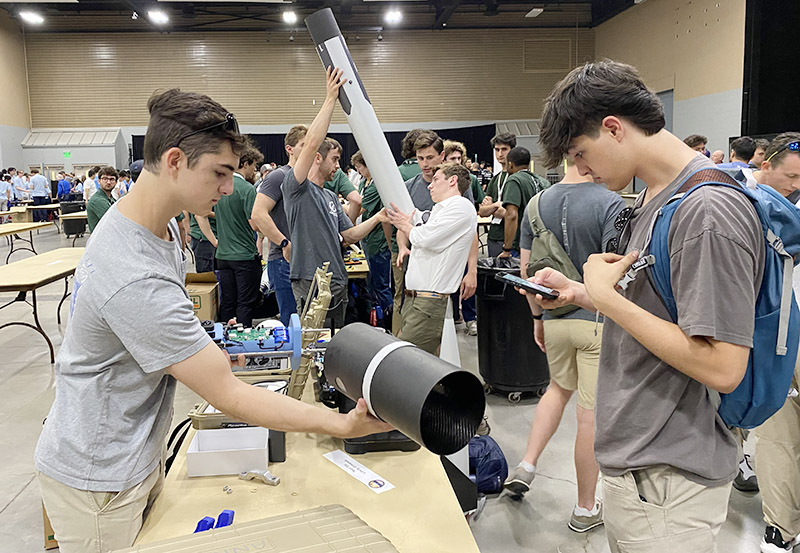
Trinity totaled 724.3 points to come in 39th out of 81 programs entered in the 10,000-feet category, with 33 rockets competing in the 30,000-feet division and three targeting a 45,000-feet apex. It reached an altitude of 9,691 feet to score 312.9 points, earning 150 points for its no-damage recovery.
In its technical reports, Liberty was awarded 32.5 out of 40 points for style and 113 out of 140 for analysis. Trinity would have finished in the top 10 overall and top five in the 10,000-feet category had the team not been one of 32 programs deducted 200 points for submitting its technical report after the deadline.
“All the safety reviews and our final flight review went well, and the judges were very impressed by Trinity,” Krick said. “Looking at the scores, the rocket received more points this year on design quality (91 out of 120), putting our total design and build score (196 out of 240) five points higher than last year. Everyone put so many hours into the rocket, and seeing that hard work pay off produced so much joy.”
A severe dust storm knocked over tents and postponed the first day of launches, but Liberty’s team demonstrated its dedication by arriving at the spaceport launchpad by 4:30 a.m. on Day 2 after a two-and-a-half-hour drive from its hotel.
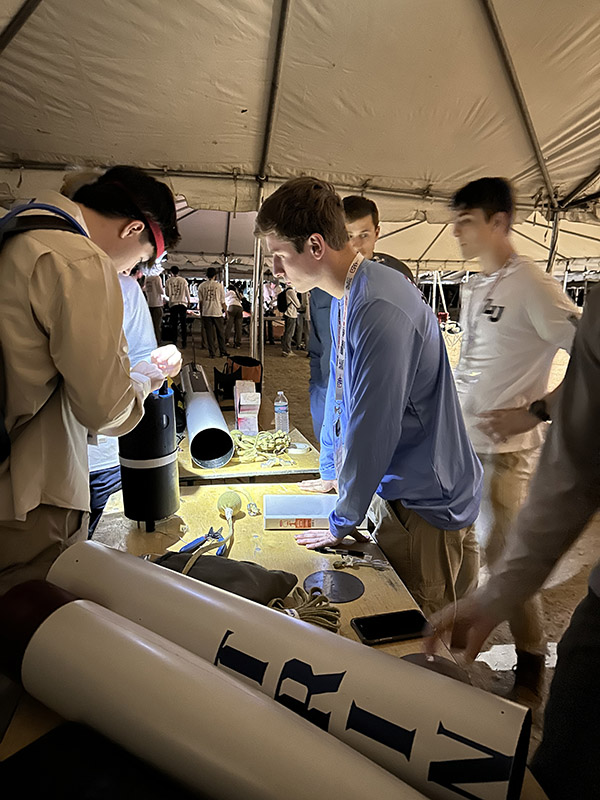
“On the day of our flight, we were able to get to the range early, and when we were finally allowed to launch, we were one of the most efficient in terms of set-up,” avionics team lead Price Drawdy said. “Our rocket was reviewed, and we were able to go first on the second set of launches, and the flight was fantastic.”
By launching early in the day, the team avoided higher temperatures and desert winds that can be extremely unpredictable and affect the rocket’s flight.
“The launch was just as satisfying as last year, even if we did not get a top-10 finish,” Krick said. “All the students put a lot of work into the rocket, and it shows. It is a beautiful piece of engineering. I am very proud of this team, and I know that these students will end up being incredible engineers.”
Drawdy, a rising senior studying computer engineering, said the team made tremendous advancements in its electronic components, with a video system and flight computer fitted into the rocket and a custom-made ground station computer.
“Avionics was an area we improved dramatically in from last year,” he said. “The live video system allows us to see the rocket in flight, to see that the parachute has deployed. The ground system allows us to see all the data and video from all the systems on the rocket, systems that are super helpful in being able to tell what’s going on with the rocket mid-flight.”
Drawdy said some of the systems ran extremely well while others experienced issues on the launch pad that the team could not have foreseen, such as radio interference that affected its ground station computer readings.
“Last year, we were just starting out, and now we are actually competing in a lot of ways we weren’t in the past, and we were extremely competitive,” he said.
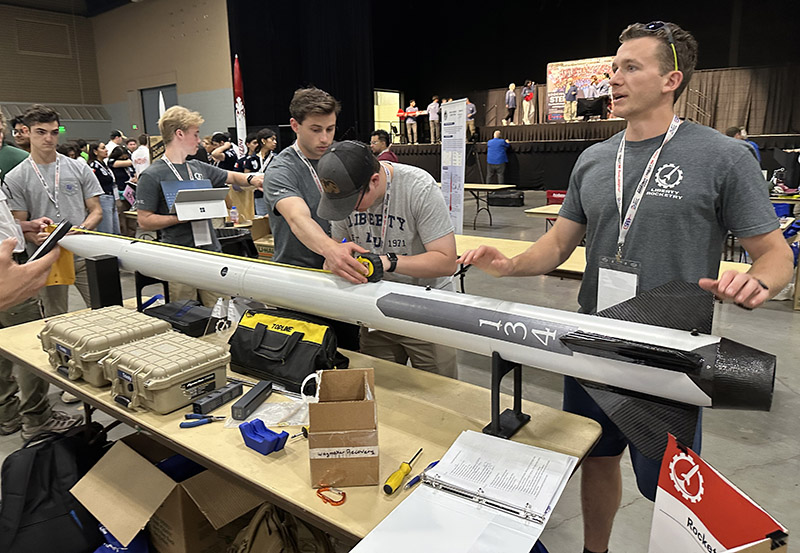
“The rocket has improved beyond its accuracy,” Krick added. “All the components were made to fit in the rocket with precision and ease. Each piece had a reason behind it, and it allowed us to construct and deconstruct the rocket quickly, something a lot of teams struggle with.”
Besides Krick and Drawdy, team members traveling to Texas included lead manufacturing engineer Johnny Sugarman, project manager Simon Babcock, and aeronautics team lead Sam Worthington, who are all rising senior mechanical engineers; ground station lead Jack Harris, a rising senior studying computer science and cybersecurity; rising sophomores design engineer Steele Fritchie and recovery lead assistant Owen Offman; and rising junior mechanical engineer Josh Blottenberger.
Together, they executed their jobs extremely well throughout the week, demonstrating cooperation and collaboration acquired throughout the school year, when delegation and efficient task management was essential from such a large team.
“Every year has been better than the one before,” Drawdy said. “We continue to build on previous rockets, maintaining excellence and consistency while adding in some experimental features. If we keep doing those things well, we are looking at a top-five finish next year.”
Drawdy said he is advising next year’s avionics team — led by rising junior Bradley Campbell, who is currently completing an internship at SpaceX — to add air brakes that could help the rocket reach closer to its target altitude.
He said learning from other teams was one of the most rewarding takeaways from the competition. Programs such as Cornell, Duke, Embry-Riddle, and Purdue were among the frontrunners. The University of Virginia, which did its test launch at the same time and location as Liberty in April, placed second overall.
“The fact that we can hold our own with those schools is pretty cool,” Drawdy said. “Being able to see what all the other teams did, some better than ours, and the unique ways everyone approached these problems, was very constructive. We had great conversations with some of the Australians (including IREC overall winner University of Sydney) and were surrounded by some of the smartest people from a lot of the biggest-name universities all around the world trying to solve the same problems.”
